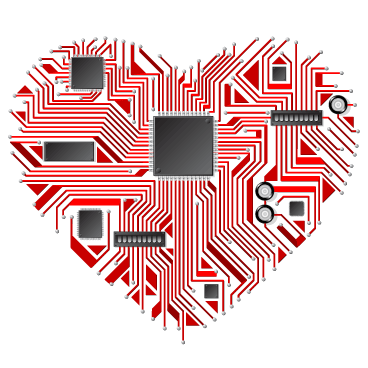We expect ATMs to nearly instantaneously dispense cash at locations around the globe, and assume that flight reservations made from home computers will come off without a hitch. Yet the lion’s share of our daily transactions with healthcare providers still take place the old-fashioned way—by calling on the phone, leaving a message, and then waiting for a return call or postcard in the mail.
The national buzz around “meaningful use” of interactive healthcare technologies such as electronic health records has focused primarily on financial benefits to the healthcare community. But what does it mean for the regular Joe, or Jane?
To find out more about technology and the future of your healthcare, the Post spoke with Wayne Oliver, Vice President, Washington DC-based Center for Health Transformation (healthtransformation.net), and Ryan Sorrels of global technology company NCR, one of CHT’s 100 member companies.
“People have come to expect easy access to the airline and banking industries in their daily transactions,” notes Sorrels. “Healthcare is certainly more complex than checking in for a flight. But we now have interactive technology solutions to address that complexity in meaningful ways, making it easy for patients to directly communicate with providers and access information.“
“Meaningful use” is a key component of the Health Reform Bill passed last spring. The bill contains federal stimulus funds designed to accelerate adoption of new healthcare technologies.
“Meaningful use is the government’s terminology within the stimulus package to determine whether physicians, hospitals, and other providers would be eligible for enhanced reimbursement,” explains CHT’s Wayne Oliver. “To qualify for some funds, doctors must comply with a specific group of objectives to demonstrate that they are meaningfully using technology to advance patient care.”
Requests from doctors requesting information on storing medical records online have jumped 36 percent since passage of the Reform Bill, according to Medefile.com, a healthcare technology and services organization.
Advocates emphasize, however, that innovative technologies from NCR and other groups will improve healthcare for everyone, even should federal regulations change.
“Many providers are looking at technologies to streamline the processes that happen within their offices,” Sorrels points out. “But the message from patients should be: Don’t stop your electronic processes at the front desk. Transactions that happen between the facility and the patient’s home need to be part of the conversation, too.”
And that’s where medical consumers—you—can get involved.
“For patients, the first step in helping move our healthcare system into the 21st century is having a conversation with their physician,” advises Oliver. “Talk about his or her plans to use technology that creates an environment in which patients and providers can better interact, and in a way that enhances care.”
Questions for your provider may include: Do you intend to utilize an electronic health record (EHR) system? Are you considering creating your own website to securely post lab results? Will the website provide personal health records (PHRs) for your patients? Are you willing to communicate via e-mail?
Here are 6 ways that self-service and kiosk-based technologies could change your future doctor visits.
- Book Your M.D.: Access a secure web link to schedule an appointment.
- Sidestep Paperwork: Use a check-in kiosk at the doctor’s office to electronically enter and verify demographic information, sign consent forms and complete health-related questionnaires.
- Access Lab Results: Obtain test findings via a computer or mobile device.
- eChat with Your M.D.: Exchange secure electronic messages rather than making phone calls.
- Pay Your Bills: Log online to view payment histories and settle outstanding balances.
- Pre-Authorize Payments: Expedite bill payments by pre-authorizing a credit card for co-payments and balances not covered by your insurance provider.
Become a Saturday Evening Post member and enjoy unlimited access. Subscribe now




Comments
The following response is published in the March 2011 issue of our print magazine:
Your excellent question is in the spotlight as our health care system and related electronic technologies take shape.
“To safeguard our financial records, we count on all bank employees to follow all the rules all the time,” explains Bonnie Cassidy, president of the American Health Information Management Association (ahima.org), a nonprofit group dedicated to the ethical use of health information.
“Health care providers such as doctors and hospitals also have checks and balances in place to prevent employees—even well-meaning ones—from doing something that could jeopardize patient medical records.”
Maintaining safe medical records hinges on protecting the confidentiality of personal health information—whether stored electronically or on paper. According to Cassidy, the Health Information Management (HIM) professional in each health care organization is the one responsible for making sure patient information is secure.
Patients have responsibilities, too. We know there’s plenty of legal language to wade through, but read your doctor’s Notice of Privacy Practices and discuss any concerns. Next, check that release forms specify who will receive the requested information and why. Finally, don’t give it away—never volunteer to complete health questionnaires on Web sites or over the phone.
Advocates of electronic health records say that password-protected files enhance confidentiality and streamline record retrieval for better patient care.
How private and secure is my personal medical information?